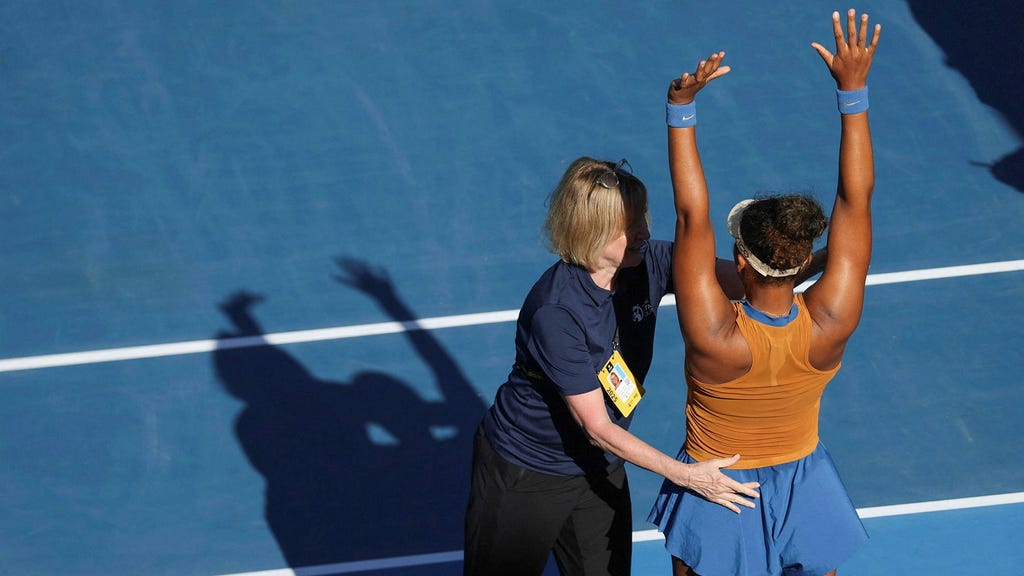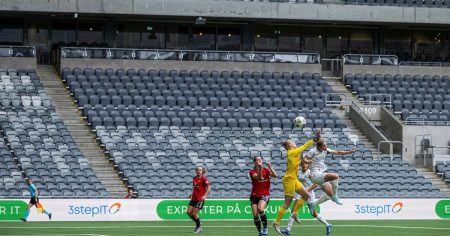Naomi Osaka’s long-awaited return to a tennis final after a three-year drought culminated in a heartbreaking anticlimax. Facing Clara Tauson in the ASB Classic final in Auckland, New Zealand, Osaka showcased glimpses of her former dominant self, capturing the first set 6-4 with a blend of powerful groundstrokes and aggressive net play. The victory seemed within her grasp, a beacon of hope after a period marred by injuries and struggles with mental health. However, the narrative took a cruel twist as Osaka, visibly hampered by a physical ailment, was forced to retire from the match in the second set, relinquishing her chance at a title and adding another chapter to her recent struggles. This abrupt ending left fans and commentators alike pondering what could have been, and raised concerns about Osaka’s physical preparedness for the upcoming Australian Open.
Osaka’s first set performance suggested a resurgence of the champion who once held the world number one ranking. Her serve, a weapon that had occasionally faltered in the past, found its mark with regularity, delivering aces and setting up opportunities for aggressive follow-up shots. Her groundstrokes, particularly her forehand, carried the weight and depth that had characterized her victories in Grand Slam tournaments. Against Tauson, Osaka demonstrated improved court coverage, anticipating the Dane’s shots and dictating rallies with her superior power. This display of form provided a tantalizing reminder of the talent that had propelled her to the pinnacle of the sport. It offered a glimmer of hope that, despite recent setbacks, Osaka was rediscovering the winning formula that had made her a global tennis icon.
The second set, unfortunately, revealed a different story. Early signs of discomfort began to surface, with Osaka exhibiting labored movement and wincing after certain shots. The fluidity and explosiveness that had characterized her first set performance gradually diminished, replaced by a growing sense of vulnerability. As the set progressed, the physical toll on Osaka became increasingly apparent. She sought medical attention, a clear indication that the issue was more than just a minor niggle. The eventual decision to retire from the match, while undoubtedly difficult, was a pragmatic one, prioritizing long-term health over the immediate pursuit of a title.
The retirement casts a shadow over Osaka’s preparations for the Australian Open, the first Grand Slam tournament of the year. While the exact nature and severity of her injury remain undisclosed, the timing of the setback raises concerns about her ability to compete at the highest level in Melbourne. The Australian Open demands peak physical condition, with matches often extending to grueling five-set battles in scorching heat. Osaka’s withdrawal from the Auckland final casts doubt on her ability to withstand the rigors of a Grand Slam event, potentially jeopardizing her chances of contending for the title.
Beyond the immediate implications for the Australian Open, Osaka’s recurring injury struggles raise broader questions about her long-term career trajectory. The frequency of these setbacks has disrupted her training and competitive schedule, hindering her ability to maintain momentum and consistency. A prolonged absence from the tour could further erode her ranking and confidence, making the climb back to the top even more challenging. The mental and emotional toll of these recurring injuries cannot be underestimated, adding another layer of complexity to an already challenging period in her career.
Despite the disappointment of the Auckland final, there were positive takeaways from Osaka’s performance. The glimpses of her former dominant self in the first set offered a reminder of her immense potential. If she can overcome her physical challenges and regain full fitness, Osaka remains a force to be reckoned with in women’s tennis. Her resilience and determination, honed through adversity, may yet propel her back to the heights of the game. However, the road ahead remains uncertain, and the coming weeks will be crucial in determining whether Osaka can recapture her winning form and fulfill the promise of her extraordinary talent. The Auckland final, while ending on a somber note, may also serve as a catalyst for reflection and renewed focus as Osaka navigates the complexities of her career and personal journey.














